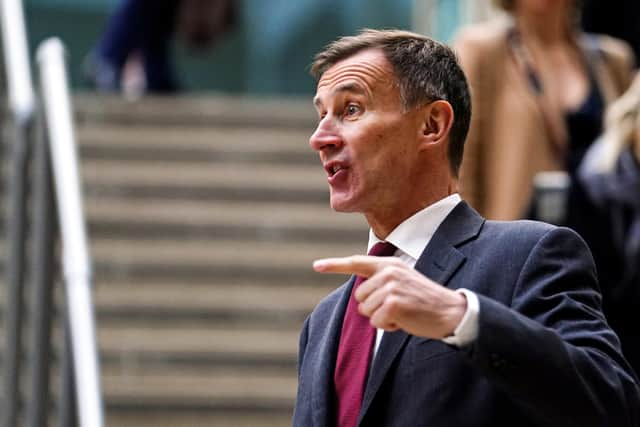Wage growth failing to keep pace with inflation as jobs market cools
The Office for National Statistics (ONS) said that regular pay growth, which excludes bonuses, surged to 6.7 per cent in the three months to December as employers came under increased pressure to lift wages as living costs soar.
The only time on record that the rate has been higher was in 2021, in the midst of the global pandemic, when regular pay growth reached highs of 7.3 per cent.
Advertisement
Hide AdAdvertisement
Hide AdBut the ONS data showed workers are still seeing their pay growth fail to keep pace with sky-high prices as the cost-of-living crisis keeps households under pressure.


The indication of cooling in the jobs market came as Ford announced yesterday it would be cutting 1,300 jobs in the UK.
The redundancies will see the motor company lose around a fifth of its 6,500-strong UK workforce and come amid wider plans to scrap around 3,800 jobs in the next three years across Europe.
It said the bulk of the UK job losses will affect the company’s technical centre in Dunton in Essex, where it has about 3,400 workers.
Advertisement
Hide AdAdvertisement
Hide AdA smaller operation in Stratford in east London, where about 200 staff work, will also be hit.
Manufacturing and logistics plants in Merseyside, Dagenham, Southampton and Daventry will be unaffected by the shake-up, Ford said.
Nationally, the unemployment rate remained unchanged in the final quarter of 2022, at 3.7 per cent, the same rate that was recorded in the three months to November and remaining close to record lows.
However, the ONS reiterated that there were signs of a slowdown in the labour market, with another fall in vacancies being listed and a slight uptick in the rate of redundancies.
Advertisement
Hide AdAdvertisement
Hide AdThe estimated number of vacancies fell by 76,000 – the seventh consecutive fall, the ONS said.
This reflects economic pressures and uncertainty, leading firms to hold back on recruitment, it said.
It comes after figures last week showed UK output was flat in the final quarter of 2022, narrowly avoiding recession but seeing growth stagnate ahead of what is expected to be a difficult year for the economy.
Chancellor Jeremy Hunt insisted: “In tough times unemployment remaining close to record lows is an encouraging sign of resilience in our labour market.
Advertisement
Hide AdAdvertisement
Hide Ad“The best thing we can do to make people’s wages go further is stick to our plan to halve inflation this year.”
In a rare piece of good news for consumers, the Association of British Insurers (ABI) reveals today that the average cost of home insurance has fallen to its lowest level in a decade.
While many other household bills were surging, the average cost of home insurance in 2022 was £300 – the least expensive amount since the ABI started collecting the data in 2012.
The ABI said the home insurance market remained very competitive, despite many homes experiencing weather-related damage last year.
Comment Guidelines
National World encourages reader discussion on our stories. User feedback, insights and back-and-forth exchanges add a rich layer of context to reporting. Please review our Community Guidelines before commenting.